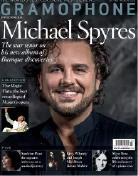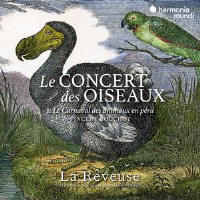Texte paru dans: / Appeared in: |
|
|
Outil de traduction |
|
|
The star of this album is the flageolet. But as such, ‘Le concert des oiseaux’ is not the most relaxing of listening experiences, and certainly not an album best experienced through headphones. The flageolet is a high-pitched, recorder-like instrument. According to the adorable website of flageolet maker Philippe Bolton ( lute-a-bec.com), who also made two of the instruments featured here, the French flageolet was played from the Renaissance until at least the beginning of the First World War. During the 18th century it was used to teach tunes to canaries and other birds. This hazy line between ‘real bird’ and ‘musical instrument’ is luxuriously explored by ensemble La Rêveuse, not least in the opening track, which transforms sampled sounds of, presumably, very real birds into the duetting flutes of Purcell’s The Fairy Queen.
The ambiguity continues in Schwartzkopff’s Sonata, which imitates a nightingale and a cuckoo. If it wasn’t for the occasional vibrato, the flûte à bec could easily be mistaken for a chamber organ.And elsewhere on the album, Kôske Nozaki plays a gemshorn – an instrument of the ocarina family historically made from the horn of a goat – and a musette de cour. This is a timbral feast for the ears.
The second half of the programme is dedicated to a new commission, Le carnaval des animaux en péril by Vincent Bouchot (b1966). The work chimes with the current ecological crisis, but instead of animals dying out, it’s the existence of musical instruments that is under threat. We’re reminded in the booklet notes – and I would recommend listeners to dish out for the physical object, a fine-looking and -feeling thing, adorned with gorgeous illustrations of birds and strange creatures – that the theorbo, flageolet, quinton and viola da gamba all but nearly disappeared from existence at the end of the 18th century. Bouchot titles the movements as a suite of baroque dances, but this ‘zoological fantasy’ sounds more like theatre music. Most convincing is the Sarabande, a depiction of two owls. The fabulously shrill woodwind instruments blend with the searing glow of what I believe to be a bowed vibraphone – it’s both serene and sinister. Admittedly, I prefer the musicians of La Rêveuse in their natural habitat of the 17th century, but there is much in Bouchot’s composition to excite. |
|




